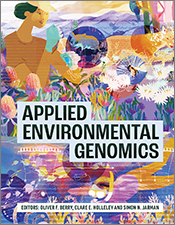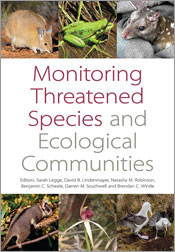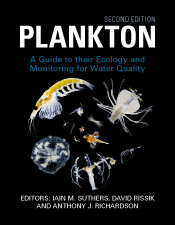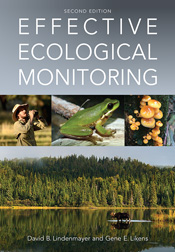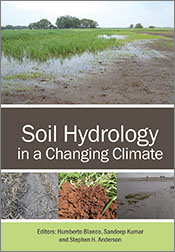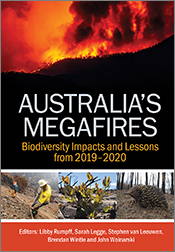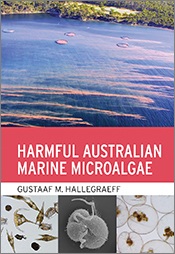Applied Environmental Genomics
Edited by: Oliver F. Berry, Clare E. Holleley, Simon N. Jarman
A detailed introduction to a fast-moving field that is transforming environmental management.
DNA is the essence of life and the original ‘big data’. New technologies are allowing scientists to access and make sense of this information like never before, and they are using it to solve the world’s greatest environmental challenges. + Full description
Applied Environmental Genomics synthesises the latest and most exciting uses of genomic technologies for environmental science and management. With an emphasis on diversity of applications and real-world demonstrations, leading researchers have contributed detailed chapters on innovative approaches to obtaining critical management-relevant information about the natural world. These chapters are complemented by perspective sections written by environmental managers who describe their experiences using genomics to support evidence-based decisions.
Ideal for students, researchers and professionals working in natural resource management and policy, Applied Environmental Genomics is a comprehensive introduction to a fast-moving field that is transforming the practice of environmental management, with profound relevance to industry, government and the public.
- Short descriptionNews
Sales in Australia and New Zealand only. Elsewhere, this title is available through CRC Press [external link].
Reviews
"The authors have cleverly set out to capture a greater diversity of genomic applications than typically are included in advanced texts, by including applications sourced through scientific journal literature. [...]
Applied Environmental Genomics will swiftly become a useful go to resource for those involved in natural resource management, and conservation, including wildlife researchers, ecologists and students.
"
Wildlife Health Australia, 13 December 2023
Details
Hardback | December 2023 | $200.00ISBN: 9781486314928 | 368 pages | 270 x 210 mm
Publisher: CSIRO Publishing
Colour illustrations, Colour photographs, Illustrations
ePDF | December 2023
ISBN: 9781486314935
Publisher: CSIRO Publishing
Available from eRetailers
ePUB | December 2023
ISBN: 9781486314942
Publisher: CSIRO Publishing
Available from eRetailers
Features
- Profiles the latest applications of genomics to environmental management.
- Features perspectives from environmental managers about the use of genomics in practice.
- Explores the enormous breadth of applications and global relevance of environmental genomics.
- Includes contributions from leading global experts.
Contents
AcknowledgementsList of contributors
Introduction to applied environmental genomics (PDF, 1.81 MB)
Acknowledgements
Section A: Biodiversity
1: Design considerations for eDNA metabarcoding surveys
2: Measuring biodiversity with eDNA metabarcoding
3: Perspective – eDNA and metagenomics: a story of a disruptive technology for biodiversity monitoring
4: Revealing animal diet and food webs through DNA metabarcoding
5: Approaching ecological questions using DNA barcodes
Section B: Life history and population biology
6: Lifespan estimation from genomic analysis
7: Development of epigenetic clocks
8: Molecular sex identification for applications in conservation, industry and veterinary medicine
9: Perspective – Whole genome assemblies, devils and disease
10: Genetic-based inventories of wildlife abundance
11: The practical magic of close-kin mark-recapture
12: Perspective – Genomics and bear management
13: How can we use genomics to predict and improve population viability?
Section C: Adaptation and change
14: Adaptive responses to the environment and environmental change
15: Perspective – The power of genomics for guiding reintroductions
16: Palaeo- and museo-genomics: perspectives on modern species
17: Perspective – Genomics and the prioritisation of taxa and populations for conservation
Section D: Environmental molecular physiology
18: Applied epigenomics in a rapidly changing world
19: DNA-based microbial bioindication of environmental state
20: Perspective – The promise of ecotoxicogenomics for assessing aquatic health
Section E: Spatial genomics
21: Unravelling plant-pollinator interactions through pollen DNA analysis
22: Genomic approaches to study dispersal in wild animal populations: implications for wildlife management
23: Conservation prioritisation based on evolutionary distinctiveness of communities
Section F: Biosecurity and disease monitoring
24: Invasive species detection and management using genomic methods
25: Genomic identification and surveillance of infectious diseases in natural systems
26: Management of vertebrate pests using genetic control techniques
27: Perspective – The ‘E’ in RD&E and the application of genomics for environmental and biosecurity risk management
Glossary
Index
View the full table of contents with chapter abstracts (PDF, 745 KB)
Authors
Oliver F. Berry is Director of the Environomics Future Science Platform at CSIRO. His career has featured a diversity of genomics techniques from population genomics to environmental DNA, and he has worked in application domains from conservation biology to invasive species management.
Clare E. Holleley is a Principal Research Scientist at National Research Collections Australia (CSIRO). She is an expert in vertebrate sex determination and an innovator in the field of historical epigenomics. Her work characterises rates of evolutionary change in ecological, reproductive and disease research.
Simon N. Jarman is Professor of Environmental Genomics at Curtin University. He is an expert in analysis of animal age and life cycles with genomic methods, and environmental DNA analyses of species diversity.
Contributors:
Ostaizka Aizpurua, Antton Alberdi, Alana Alexander, Fred W. Allendorf, Jeremy J. Austin, Andreas Bachler, Katherine Belov, Andrew Bissett, M. Teresa Boquete, Ángel Borja, Mark V. Bravington, Georgina Brennan, Thibaut Capblancq, Emma L. Carroll, Renee A. Catullo, Hugo Cayuela, Jackson Champer, Yuanyuan Cheng, Anna C. Clark, Joseph D. Clark, Jocelyn P. Colella, Joseph A. Cook, Simon Creer, Catherine Darst, Natasha de Vere, Bruce Deagle, Floriaan Devloo-Delva, Rey Edison, Raphael Eisenhofer, Francisco Encinas-Viso, Christopher Faulk, Brenna R. Forester, Neil J. Gemmell, Paul George, Arthur Georges, Tom Gibson, Peter Gilchrist, Alicia Grealy, Stephen E. Greiman, Geoff Grossel, Carolyn J. Hogg, Clare E. Holleley, Luke Holman, Simon Jarman, Laura Jones, Marty Kardos, Mandira Katuwal, Alexander Kopatz, Susan Kutz, Clayton Lamb, Jesse R. Lasky, Tom Little, Joshua Llinas, Abigail Lowe, Holly L. Lutz, Benjamin Mayne, Christiana McDonald-Spicer, Julie McInnes, Sabrina M. McNew, Alvine C. Mehinto, Liz Milla, Craig C. Moritz, Garth Mowat, Anita Norman, Iñaki Odriozola, Johan Pansu, Emma Peel, William Bernard Perry, Kirthana Pillay, Michael Proctor, Jérôme G. Prunier, Orly Razgour, Christina L. Richards, Lee A. Rollins, Quentin Rougemont, Emily Roycroft, Nils Ryman, Michael Stat, Katarina C. Stuart, Helen Taylor, Michael Traugott, Jodie van de Kamp, Katrina West, Lauren C. White, Sarah L. Whiteley, Andrew P. Woolnough.

